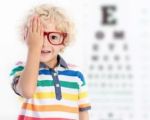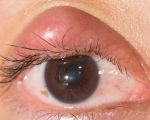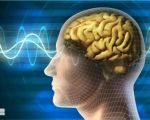
- understanding-eye-focus-and-its-role-in-reading - Understanding Eye Focus and Its Role in Reading
- why-eye-focus-declines-and-how-it-affects-reading - Why Eye Focus Declines and How It Affects Reading
- how-to-improve-eye-focus-for-better-reading - How to Improve Eye Focus for Better Reading
- real-life-case-digital-fatigue-and-focus-recovery - Real-Life Case: Digital Fatigue and Focus Recovery
- when-to-seek-professional-help - When to Seek Professional Help
- support-your-vision-journey-with-eye-docs - Support Your Vision Journey with Eye Docs
1. Understanding Eye Focus and Its Role in Reading
Reading may seem like a passive act, but your eyes are working intensely. Focus—the ability to maintain a clear image of text at a constant distance—is essential for fluent reading. When people ask how to improve eye focus for better reading, they’re often struggling with blurry vision, eye strain, or fatigue after just a few pages.
At the core of good eye focus is a combination of muscle coordination and lens flexibility. When everything works in harmony, your eyes glide from word to word smoothly. But when focus falters, comprehension drops, and frustration sets in.
2. Why Eye Focus Declines and How It Affects Reading
2.1 The Impact of Screen Time and Modern Lifestyles
With hours spent on computers and phones, our eyes are often fixed at one distance for too long. This static focus causes the ciliary muscles (which help the eye lens adjust) to weaken. It's like leaving your arm in a sling—after a while, movement becomes harder.
2.2 Natural Aging and Accommodation Issues
As we age, the eye’s lens becomes less flexible—a condition called presbyopia. While common in adults over 40, even teens and young adults are reporting early signs of accommodative fatigue due to excessive digital exposure.
2.3 Poor Lighting and Posture
Low lighting or incorrect posture can lead to squinting and excessive focus effort, further exhausting the eye muscles. Over time, this makes it harder to maintain steady focus during extended reading sessions.
3. How to Improve Eye Focus for Better Reading
3.1 Practice Eye Focusing Exercises
One of the most effective ways to improve eye focus is through simple exercises. Try the “near and far focus” method: hold your thumb 10 inches from your eyes, focus on it, then switch to something 10 feet away. Repeat several times a day to rebuild focusing flexibility.
3.2 Use the 20-20-20 Rule
Every 20 minutes, take a 20-second break to look at something 20 feet away. This allows your eye muscles to reset and reduces strain—especially crucial if you're reading on a screen. This method is backed by ophthalmologists and widely recommended for digital wellness.
3.3 Optimize Your Reading Environment
Ensure adequate lighting—preferably natural—and maintain a proper distance of about 16 to 18 inches from the reading material. Use ergonomic reading chairs and try not to read while lying flat on a bed or couch, which distorts posture and eye alignment.
3.4 Support with Nutrition and Hydration
Your eyes need nutrients to function well. Vitamins A, C, and E, along with lutein and omega-3 fatty acids, are crucial for eye health. Drink plenty of water too—dehydrated eyes can’t focus well. Think of it as fueling your vision, not just your body.
4. Real-Life Case: Digital Fatigue and Focus Recovery
4.1 The Challenge: Student Vision Decline
Emma, a 17-year-old student, began experiencing blurred vision and headaches while preparing for her college entrance exams. She was reading nearly 10 hours daily—mostly from digital screens. Her ability to focus on text dropped drastically.
4.2 The Turnaround
With guidance from an eye care specialist, Emma adopted a structured routine: she followed the 20-20-20 rule, did daily focus exercises, and reduced screen glare with filters. Within three weeks, her vision stabilized. Her reading speed improved, and she reported less fatigue—proving that strategic changes can yield real results.
5. When to Seek Professional Help
5.1 Warning Signs You Shouldn’t Ignore
If eye focus issues persist even after lifestyle changes, it could signal an underlying condition like convergence insufficiency or early presbyopia. Symptoms such as double vision, difficulty switching focus, or frequent headaches during reading should not be ignored.
5.2 Role of Comprehensive Eye Exams
Annual eye exams go beyond checking visual acuity—they test how well your eyes focus, track, and work together. A professional can recommend vision therapy, prescription lenses, or blue-light protection tailored to your needs. Clinics like Eye Docs specialize in modern, non-invasive solutions that address both symptoms and root causes.
6. Support Your Vision Journey with Eye Docs
Improving reading focus isn’t just about clearer text—it’s about enjoying the act of reading again. At Eye Docs, we understand the science behind sight and the personal stories behind every symptom. Whether you need personalized eye training plans or the right pair of reading glasses, we’re here to support your journey toward sharper, more comfortable reading.
Knowing how to improve eye focus for better reading empowers you to take control of your visual health. Small habits lead to big improvements—start today, and let your eyes thank you tomorrow.








